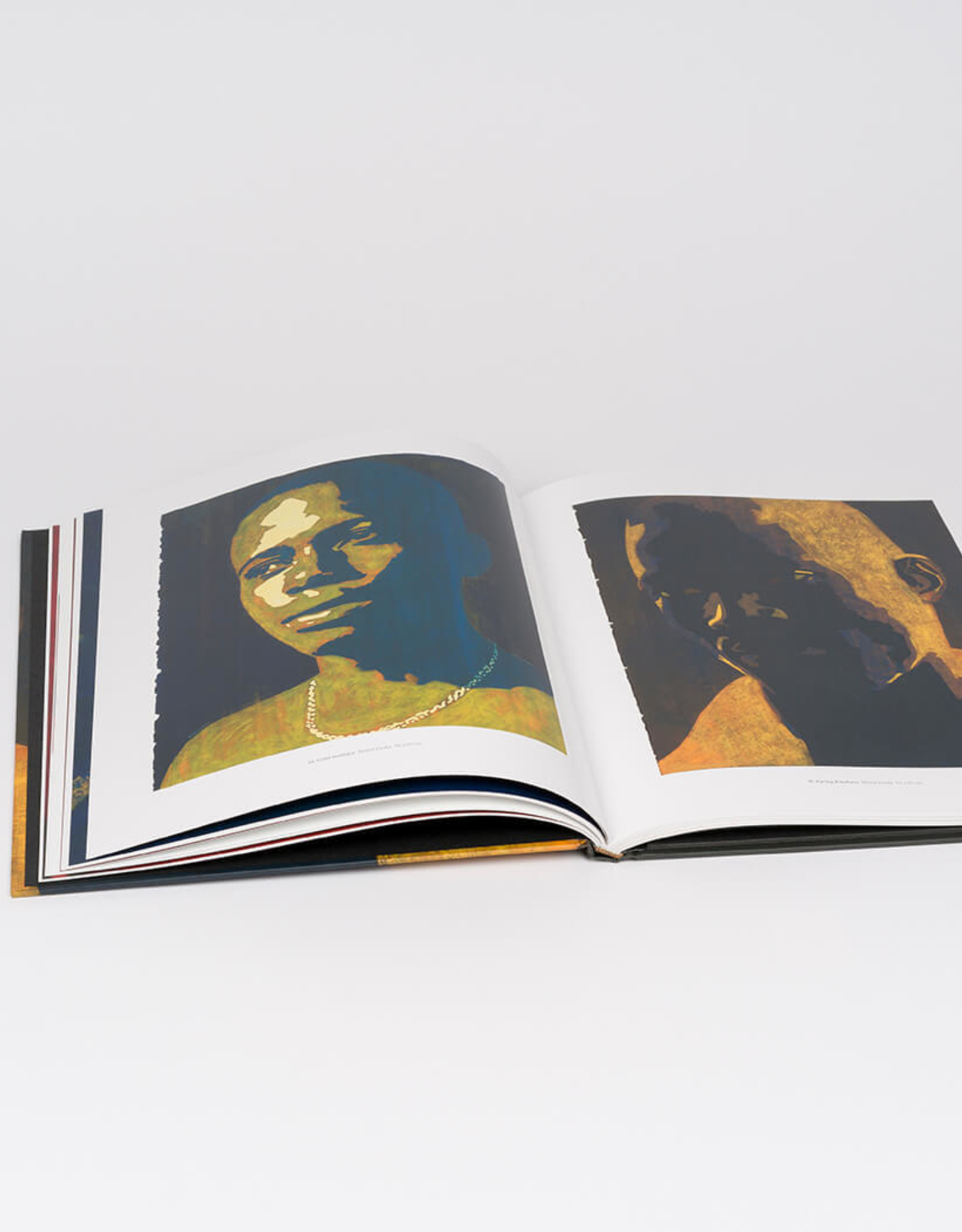Bruno Vekemans - Kinshasa Congo
| ISBN number: | 9789077207192 |
| Availability: | In stock (8) |
About the book:
In December 2005, Bruno Vekemans decided for the first time in his oeuvre to create an extensive series of artworks on a particular theme. In May of 2006, Bruno Vekemans stayed in Kinshasa, Congo - 2 months prior to the first round of the first democratic elections in 40 years - to prepare for a series of gouaches, oils on canvas and verres églomisés.
His physical presence and the emotional experience of this study trip to Kinshasa made an overwhelming impression on Bruno Vekemans, both as a person and as an artist. He allowed this project to occupy two years of his life. At the centre of it all lies authenticity.
They are not affected; neither are they influenced by the media: qualities that enable Bruno Vekemans to portray them in their full glory. He gives the Congolese a starring role. The image material - photos and film - collected as a sort of sketchbook for this series, is "genuine" and experienced by the artist. This art book recreates that Kinshasa Congo experience for the reader, not only through its text, but also and above all through its images.
Bruno Vekemans is a personality, and, beyond that, a man with a great deal of respect for other people, both in his daily life and as subjects.
He retains everything of the authentic artist, and has been painting since the age of seven. Throughout his career, Vekemans has always maintained that he does not like to theorise or even philosophise about his work. His life and his mission are simply to paint. That reflexive response reveals how his art is a highly intuitive and everyday activity to him.
About the artist:
Bruno Vekemans is part of a long tradition of Flemish painters, a tradition that has never been broken, not even when painting was pronounced dead. Vekemans does belong to the generation that had the most difficult time in being accepted as a painter. The American art critic, Irving Sandler, wrote about this period: “Painting in the pluralistic era has the advantage that the artists can paint more freely than ever before, with the basic assumption that every style will receive a more or less honest valuation. The disadvantage is really that artists, even the most individual and skilled among them, are finding it increasingly difficult to attract the attention of the art world and to be acknowledged by it.”
Vekemans’s oeuvre has, from the moment that he began to draw his follies in the 1970s until today, shown a coherent progression, an almost logical evolution in which only one large digression was noticeable. This digression came around 1989, when he decided to let painting be painting and not to make any excuses for extra-pictorial stories, criticisms or analyses. He continued to radically defend this choice for the following 20 years. But even this digression did not prevent continuity from being present in his work. He continues to use the collage technique, not only technically, as a preliminary design for his paintings, but – subconsciously – philosophically, like sampling the visual culture of his times.
He is a pictorial odd-job man, in the same sense respectfully intended by Claude Lévi-Strauss in La Pensée Sauvage, a man who works with his hands and brings together existing objects to make something new. Vekemans is no philosopher, no highly-trained virtuoso painter, not a part of the artistic beau monde, but rather a worker who is fascinated by the images of his times, which he obsessively repeats and resumes in a sober, harmonious palette. And he once again dares to do what has been forbidden in the art of the 20th century for so long: experience pleasure when painting.
- Jan de Zutter
| Binding : | Hardcover |
| Size: | 300 x 235 mm |
| Weight: | 1,06 kg |
| Language: | NL, EN, FR, DEU |
| Number of pages: | 112 |
| ISBN: | 9789077207192 |




















